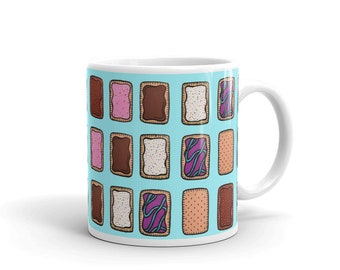

#90s paper cup design pop tart free#
“Thaw in the refrigerator before rolling out.”Ĭaramel demystified: To avoid crystallization of sugar, Johnson says to make sure your pan is free of any residue. “Simply flatten the extra into a 1-inch-thick disk, wrap it in plastic wrap, and freeze,” she says. The good news is that the dough for the extra crust freezes well, giving you a jump-start on your next tart. What to do with the extra crust: Johnson’s recipe makes two crusts-that’s because it calls for one egg, which makes the crust recipe hard to halve. “Then, I carefully lift the pan bottom with the rolled doughĪnd place it into the tart pan, pressing the overhanging dough up the sides of the pan.” How she rolls: “I roll the dough directly on top of the removable tart pan bottom, until the dough extends beyond the bottom’s edges by about an inch,” Johnson says. Most kitchen scales have a gram setting as well as an ounce setting. Get a kitchen scale: Johnson recommends measuring dry ingredients by weight for better accuracy. And of course, we think chocolate is always in season! One of her best-sellers, it’s a glamorous option for stylish holiday gatherings.

With the growing season long over, we sweet-talked our way into snagging the recipe for her famed Chocolate Tart With Bourbon Caramel and Sea Salt.
#90s paper cup design pop tart full#
Johnson and her partner, Marcus Walsh, make each tart from scratch often, selections march to the beat of the growing season, from rhubarb-custard and lemon curd topped with fresh berries early in the season, to plum-almond and nectarine-cherry as summer hits full swing. On select Saturdays from May through October, pastry lovers crowd around Tami’s Tarts-as her business is known-picking up the ultimate in artisanal single-serving tartlets. She began selling her tarts at the farmers market in 2008.

In the late ’90s and early 2000s, she perfected her craft by taking pastry courses taught by certified master bakers Didier Rosada and Philippe Le Corre at the bygone National Baking Center at Dunwoody Institute in Minneapolis. “In high school, I was the one who baked everyone’s birthday cakes.” “I always baked with my grandmother,” she says.

She first became interested in baking as a youngster. But to fans of the Jazz cup, Gina's design is perfect as is.A staff attorney for a federal court of appeals by day, Johnson crafts her popular tarts as a side hustle. The company doesn't make them anymore, and wants to redesign them to be more modern should they release them again. "It just doesn't really fit out there anymore," a representative from the company that now owns the facility where the cups were made told Gounley. Today, it's hard to find the Jazz cup in the wild. When she left, “she was told by Sweetheart that Jazz was the company’s top-grossing stock design in history," Gounley writes. Ekiss left the company in 2002 when the art department transferred to Baltimore. It appeared on paper plates and cups beginning in the early 1990s. Jazz had been her submission to a 1989 internal company design contest for a new stock image. "She wasn't expecting me to just show up, but invited me in," Gounley writes. Finally, he found himself at Gina’s doorstep. After messaging the user with no response, he turned to the phone book and tracked Gina to Aurora, Missouri, a few towns over from Springfield. The hivemind came through, to some extent: Gina, once a designer at the Sweetheart Cup Company in Springfield in the 1980s and 1990s, had dreamed up the teal and purple brushstrokes of Jazz.Ĭurious to find out more about Gina, Thomas Gounley for the News-Leader in Springfield, Missouri kept digging. After many calls and emails, he stumbled upon a Tweet claiming the Gina in question was the user’s mother. Three weeks ago, one fan turned to fellow Reddit users to track down what Google could not. But for a long time, nobody knew the origins of the design. And since its introduction, it has been bulding a steady team of fans. Today, the pattern shows up on cars, t-shirts and pillow cases of enthusiasts. This iconic teal and purple design has been gracing the sides of paper cups since the 1990s, as designer Khoi Vinh explains on his blog. The Jazz pattern that graced paper cups, like this one in the 1990s, remains a source of fascination in pop culture.


 0 kommentar(er)
0 kommentar(er)
